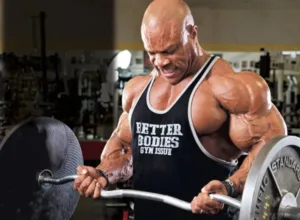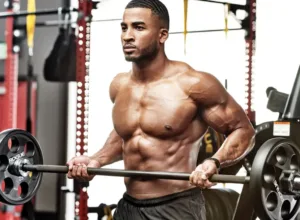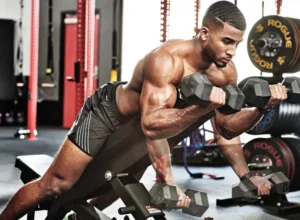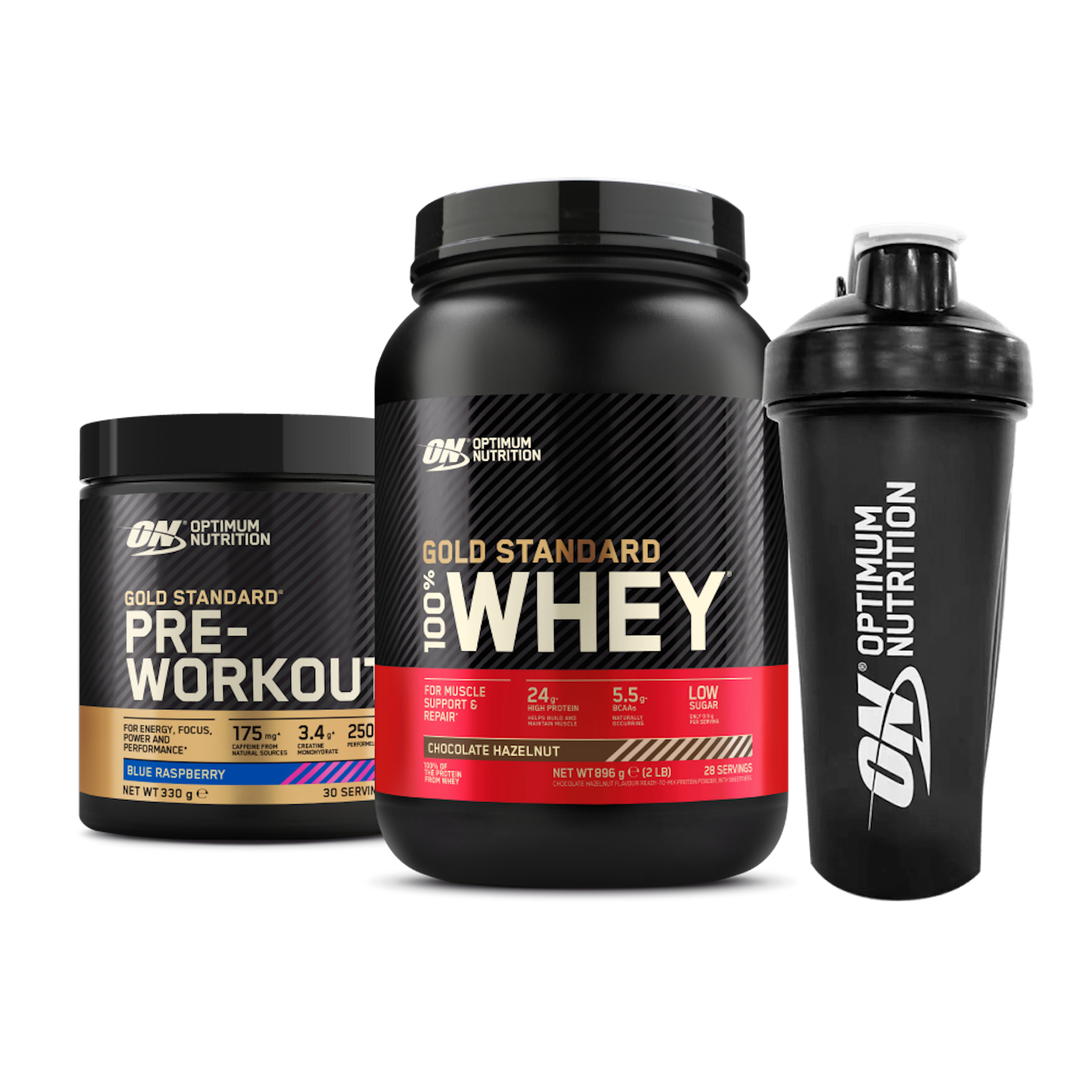The Barbell Curl. A rite of passage for aspiring bodybuilders, a staple exercise for anyone wanting to sculpt impressive arms. Often hailed as the “Holy Grail” bicep exercise, the barbell curl has earned its reputation for its effectiveness in building both muscle size and strength.
Whether you’re an experienced bodybuilder or you’re just someone hitting the gym and trying to grow your biceps, the barbell curl exercise is an essential upper-body workout to use in your strength-training program. The barbell curls exercise is the holy grail to build up your biceps, increase size, gain strength , and look better in a white shirt.
This article delves deep into the world of barbell curls, exploring its mechanics, benefits, variations, programming tips, and how to maximize your results to achieve those peak biceps you’ve always desired.
The Anatomy of a Barbell Curl
The barbell curl primarily targets the biceps brachii, a two-headed muscle on the front of your upper arm responsible for elbow flexion (bending your arm). It also engages secondary muscles like the brachioradialis (helps with forearm flexion) and the shoulder muscles (provide stability).
What Is a Barbell Curl?
A barbell curl is a variation of the biceps curl that uses a weighted barbell. Perform barbell curls by grabbing a barbell with a shoulder-width supinated grip (palms facing towards your body). Hinge your elbows, and lift the barbell toward your chest.
The Benefits of Barbell Curls
There’s a reason the barbell curl remains a cornerstone in bicep training. Here’s why:
- Effective Mass Builder: The barbell curl allows you to lift heavier weights compared to dumbbell curls, leading to greater muscle growth and strength gains in your biceps.
- Improved Neuromuscular Efficiency: The fixed barbell path promotes better mind-muscle connection, allowing you to focus on the targeted muscle group (biceps) for optimal contraction.
- Increased Core Engagement: Maintaining a stable torso throughout the movement strengthens your core, improving overall stability and posture.
- Versatility: You can adjust the grip width, weight, and tempo to target different areas of the biceps and challenge yourself progressively.
- Barbell curls increase your upper-body strength. The barbell curl targets your biceps brachii muscle as well as the brachialis, a muscle responsible for elbow flexion. With regular practice, barbell curls can help you build bigger biceps. Barbell curls generally allow you to lift heavier weight than dumbbell curls.
- Barbell curls improve your grip strength. By activating the brachioradialis muscle in your forearm, barbell curls can enhance your grip strength and improve your performance during other upper body exercises like deadlifts, bench presses, and pull-ups.
- Barbell curls are a versatile bicep exercise: You can adjust the weight plates attached to the barbell to accommodate your fitness level. Remember to start with lighter weights at first until you’re comfortable with heavyweights.
Those who are looking to put on their biceps under tension and make them bigger cannot steer away from the barbell curl. This exercise is one of the best out there if you want to make your biceps peak. The barbell curl is one of the best exercises to make your biceps grow
The barbell curl is an isolation exercise that can put your biceps under increasing tension, making it one of the top priorities for athletes looking to build bigger arms.
Below you will find out how to do the exercise properly, the muscles targeted, mistakes to avoid, pros and cons, and how many reps and sets you should do.
Here’s a breakdown of proper form for the barbell curl:
- Setup: Stand tall with your feet shoulder-width apart and core engaged. Grab the barbell with a supinated grip (palms facing up) slightly wider than shoulder-width. Your elbows should be close to your torso, and the bar should hang at arm’s length.
- The Curl: Breathe out and initiate the movement by contracting your biceps. Curl the bar upwards towards your shoulders, keeping your elbows tucked in and upper arms stationary. Don’t swing the weight or use momentum. Focus on squeezing the biceps at the top of the movement.
- The Squeeze: Hold the contracted position for a second, feeling the tension in your biceps.
- The Lower: Breathe in and slowly lower the bar back to the starting position in a controlled manner. Don’t let the weight drop.
Check Out Our List Of The Best Supplements For Building Muscle, Shredding Muscle, Recovery, And Great Health, and Wellness Products! Purchase ifbnewsfeed.org‘s apparels Here: ifbnewsfeed.org

 Variations to Spice Up Your Bicep Workouts
Variations to Spice Up Your Bicep Workouts
While the standard barbell curl is highly effective, variations can add variety and target different aspects of your biceps:
- Close-Grip Barbell Curl: Narrowing your grip (hands closer together) emphasizes the inner bicep peak.
- Wide-Grip Barbell Curl: Widening your grip (hands further apart) places more stress on the outer bicep head.
- Drag Curl: Leaning your torso slightly forward as you curl the weight keeps your elbows close to your body throughout, maximizing bicep activation.
- EZ Bar Curl: The EZ bar with a slightly angled grip can be easier on the wrists compared to a straight barbell.
Programming Barbell Curls for Maximum Bicep Growth
Here are some tips to integrate barbell curls into your bicep training routine for optimal results:
- Frequency: Aim for 2-3 bicep workouts per week, including barbell curls in each session.
- Sets and Reps: Perform 3-4 sets of 8-12 repetitions per exercise. Adjust the weight to challenge yourself for the desired rep range.
- Progression: Gradually increase the weight you lift over time to keep your muscles challenged and stimulate growth.
- Rest: Allow sufficient rest (60-90 seconds) between sets to ensure proper recovery for optimal performance.
- Warm-Up: Perform a light weight warm-up set before your working sets to prepare your muscles and joints.
- Form Over Ego: Maintain proper form throughout the exercise to maximize bicep activation and prevent injuries.
Maximizing Your Bicep Gains
Building impressive biceps goes beyond just barbell curls. Here are some additional tips:
- Diet: Consume a calorie surplus with sufficient protein (around 0.8-1 gram per pound of bodyweight) to provide the building blocks for muscle growth.
- Rest and Recovery: Allow your body adequate rest and recovery time between workouts to repair and rebuild muscle tissue. Aim for 7-8 hours of sleep per night.
- Mind-Muscle Connection: Focus on contracting your biceps throughout the movement and feeling the tension in the target muscles.
- Stretch: Include bicep stretches in your cool-down routine to improve flexibility and range of motion.
- How to Do The Barbell Curl
- Muscles Targeted
- Mistakes to Avoid
- Pros and Cons of the Barbell Curl
- How Many Reps and Sets?
- Variations of the Barbell Curl
- Learn more
This biceps exercise can put a lot of strain on the wrists and elbows. Here’s how to perform the barbell curl safely and effectively
How To Do The Barbell Curl
As the name implies, you will need a barbell to do the exercise and the desired amount of weight plates.
- The barbell can be placed on the floor mat or a rack as high as your waistline.
- Grab the barbell with an underhand grip (palms facing up) with hands slightly wider than your hips.
- Stand tall, keep your spine, neck, and head neutral.
- Your elbows should be slightly bent and locked on the side of your body.
- This is the initial position.
- Begin to curl by bending your elbows and lifting the barbell in a controlled manner.
- Stop the curl when the barbell gets close to your shoulders.
- Squeeze your biceps at the top of the movement.
- Slowly lower the barbell and begin extending your arms to the initial position.
- That is one rep.
Muscles Targeted
The barbell curl is an isolation exercise that focuses on a single-joint movement. Therefore, there is only one main muscle that is targeted by it.
- Biceps (brachial and brachialis)
To a smaller degree, your forearms are also activated during the exercise, as you need to utilize this muscle group to maintain the barbell at the top of the movement.


Mistakes To Avoid
The most common mistake people tend to do when performing barbell curls is to utilize momentum to lift the barbell, usually by curving your back or hinging to initiate the movement. By doing this, you are taking away the tension from your biceps and distributing it to other bigger muscles. Fix this by leaving your ego outside and choosing a lighter weight.
Similar to the previous mistake, some athletes tend to move their elbows while doing the barbell curl. The elbows are supposed to be locked in position at all times so that only your biceps are working during the curl, instead of your shoulders or back muscles.
The range of motion is also important to get the benefits of this exercise, but some people perform half reps by either not lifting the barbell high enough and squeezing their biceps, or by not lowering it enough until the arms are almost straightened.
Related: Why Your Biceps Aren’t Growing
Pros and Cons of the Barbell Curl
Pros
As it is usual with all barbell exercises, the barbell curl is a great and easy way to overload your biceps. By simply adding an extra weight plate, you are putting your biceps under more tension and building more muscle.
The fact that you only need a barbell makes this exercise great for people with home gyms or small spaces.
The instructions to perform the barbell curl makes it one of the easiest exercises anyone can do.
Cons
The bicep is a small muscle in our bodies, so making sure it gets bigger is time-consuming.
The barbell curl is great for hitting your biceps, but after a few weeks doing the exercise, your body will grow accustomed to it and it will be time for you to change your curl if you want to continuously see progress.


How Many Reps and Sets?
When it comes to the barbell curl or any curl for that matter, you must put form and technique above weight. Lifting 30 kilos with poor form will not be as beneficial as lifting 15 kilos with proper technique.
Choose a weight that you can perform 2-3 sets of 8-12 reps for beginners.
For advanced athletes looking to increase even further their biceps, do more sets with heavier weights, but with lower reps – something in the range of 6-8 reps.
Variations of the Barbell Curl
As it is a single-joint exercise, pretty much any curl is a variation of the barbell curl and vice-versa. Here are some exercises that most resemble the barbell curl.
Seated Barbell Curl
Dumbbell Curl
Spider Curl
Preacher Curl
Do you want more bicep content? Check out the links below:
Workout to Fix Skinny Arms (9 Exercises Included)
10 Best Exercises for Wider Biceps
16 Fund Bicep Curl Workouts for All Athletes
Learn more
Grow your upper body with these effective barbell exercises:
Wrapping Up
The barbell curl. A name synonymous with bicep development. Often hailed as the “Holy Grail exercise” for sculpted, sleeve-busting arms, the barbell curl has earned its reputation for a reason. It’s a compound exercise, meaning it works multiple muscle groups at once, making it a highly effective way to build bicep size and strength.
More About Increased Bicep Size and Massive Biceps Contents
- Here Are “The 7 Bicep Exercises” You’re Not Performing To Add Size To Your Arms
- Biceps Development: 10 Commandments Of “How to Build A Massive Biceps”
- The “3 Under-Utilized Bicep Exercises”. Utilize Them In Your Arms Day To Build Up Peak Biceps

- Hormone Replacement Therapy regimen For Men and women
- Hormone Blood Testing for Men (Bodybuilder Blood Testing)
- Shop Optimum Nutrition Energy: Anytime & Pre-Workout

 Table of Contents
Table of Contents






